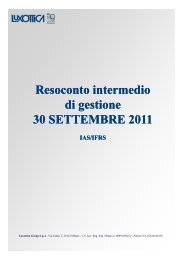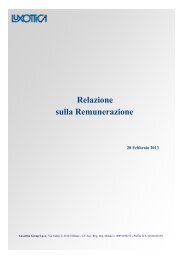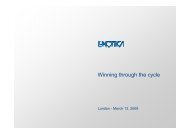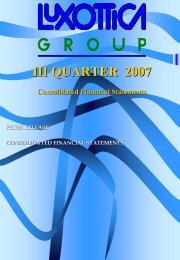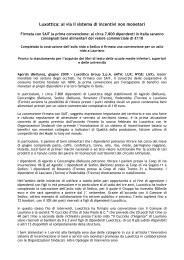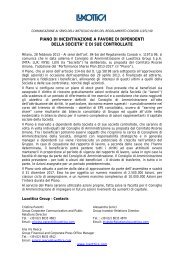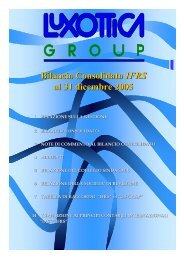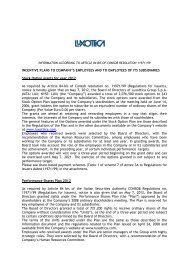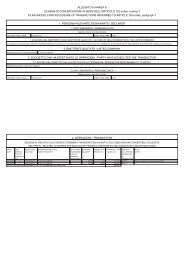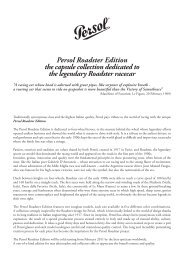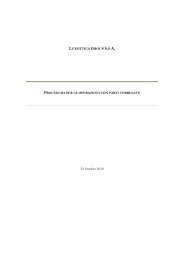Annual Review 2012 - Luxottica
Annual Review 2012 - Luxottica
Annual Review 2012 - Luxottica
You also want an ePaper? Increase the reach of your titles
YUMPU automatically turns print PDFs into web optimized ePapers that Google loves.
110 |<br />
ANNUAL REPORT <strong>2012</strong><br />
market. If the market for a financial asset is not active (or if it refers to non-listed securities),<br />
the Group defines the fair value by utilizing valuation techniques. These techniques include<br />
using recent arms-length market transactions between knowledgeable willing parties, if<br />
available, reference to the current fair value of another instrument that is substantially the<br />
same, discounted cash flows analysis, and pricing models based on observable market<br />
inputs, which are consistent with the instruments under valuation.<br />
The valuation techniques are primarily based on observable market data as opposed to<br />
internal sources of information.<br />
At each reporting date, the Group assesses whether there is objective evidence that a<br />
financial asset is impaired. In the case of investments classified as financial assets held<br />
for sale, a prolonged or significant decline in the fair value of the investment below its<br />
cost is also considered an indicator that the asset is impaired. If any such evidence exists<br />
for an available-for-sale financial asset, the cumulative loss, measured as the difference<br />
between the cost of acquisition and the current fair value, net any impairment loss<br />
previously recognized in the consolidated statement of income, is removed from equity<br />
and recognized in the consolidated statement of income.<br />
Any impairment loss recognized on an investment classified as an available-for-sale<br />
financial asset is not reversed.<br />
Derivative financial instruments<br />
Derivative financial instruments are accounted for in accordance with IAS 39 - Financial<br />
Instruments: Recognition and Measurement.<br />
At the date the derivative contract is entered into, derivative instruments are accounted for<br />
at their fair value and, if they are not designated as hedging instruments, any changes in<br />
fair value after initial recognition are recognized as components of net income for the year.<br />
If, on the other hand, derivative instruments meet the requirements for being classified as<br />
hedging instruments, any subsequent changes in fair value are recognized according to<br />
the following criteria, as illustrated below.<br />
The Group designates certain derivatives as instruments for hedging specific risks<br />
associated with highly probable transactions (cash flow hedges).<br />
For each derivative financial instrument designated as a hedging instrument, the Group<br />
documents the relationship between the hedging instrument and the hedged item, as well<br />
as the risk management objectives, the hedging strategy and the methodology to measure<br />
the hedging effectiveness. The hedging effectiveness of the instruments is assessed both<br />
at the hedge inception date and on an ongoing basis. A hedging instrument is considered<br />
highly effective when both at the inception date and during the life of the instrument, any<br />
changes in fair value of the derivative instrument offset the changes in fair value or cash<br />
flows attributable to the hedged items.<br />
If the derivative instruments are eligible for hedge accounting, the following accounting<br />
criteria are applicable:



